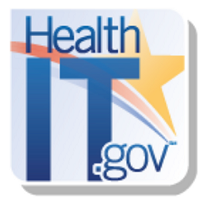 By Teresa Zayas Caban/ Chief Scientist, Tracy Okubo, PMP/ Public Health Analyst, and
By Teresa Zayas Caban/ Chief Scientist, Tracy Okubo, PMP/ Public Health Analyst, and
Kevin Chaney, MGS/ Health Scientist Administrator, ONC
Twitter: @ONC_HealthIT
Advances in Standardizing Genomics through HL7 FHIR
Earlier this year, the Office of National Coordinator for Health Information Technology (ONC), in partnership with National Institutes of Health (NIH), announced the Sync for Genes pilots – an effort to strengthen genomic data sharing that is part of the Precision Medicine Initiative. As a result of this effort, a set of genomics specifications have been refined as part of the Health Level 7 (HL7®) Fast Healthcare Interoperability Resource (FHIR®) standard, as well as the results of the Sync for Genes pilot program. The updated clinical genomics resources and profiles from HL7 FHIR, along with the program results, are important steps towards enabling genomic data from next generation sequencing (NGS) laboratories to be shared in a consistent and interoperable manner with researchers, providers, and patients.
Standardizing Genomics in FHIR
Rapid advances in the genomics field and the lack of standardized approaches to data collection, coding, and exchange have resulted in incompatible infrastructures and nomenclatures. A standards-based approach was needed to ensure that genetic data is interoperable among health information technology (health IT) systems and can be integrated easily with other clinical information.
The HL7 Clinical Genomics Work Group is taking advantage of the rapid advances made in the HL7 FHIR standard. As the first step towards integrating clinical genomics into clinical care, the Sync for Genes project leveraged the FHIR Genomics standard to support interoperable exchange of genomic data. The ongoing work and adoption by health IT developers through the All of Us Research Program will make future alignment of genomics information into point-of-care easier.
Based on the priority use cases identified by the HL7 Clinical Genomics Work Group, ONC identified an initial set of FHIR resources that were ready for focused testing and piloting by stakeholders through the Sync for Genes project. The FHIR resources selected included:
- Sequence Resource which describes NGS data primarily by identifying sequence variants, but can also contain raw sequence data;
- Observation-genetics Profile which interprets variants from sequence resource;
- DiagnosticReport-genetics Profile which describes a genetic test report, referencing test details and genetic observations;
- ProcedureRequest-genetics Profile which orders a test to detect sequence variants;
- FamilyMemberHistory-genetics Profile which references pedigree representation and related genetic observations; and
- HLA-genotyping-results Profile which utilizes Minimum Information for Reporting Next Generation Sequence Genotyping (MIRING) principles to aid immunogenetics research.
Sync for Genes Pilot Program Results
Five pilot sites, including representation from laboratories, providers, government, health IT developers, patients, and academia, participated in the testing and validation of the FHIR resources, through the Sync for Genes pilot program’s efforts.
In addition to testing the FHIR resources, the pilot programs covered core scenarios highlighted as important next steps in establishing the role of health IT in clinical genomics innovation. These piloted use cases were established in the HL7 Clinical Genomics Work Group’s Domain Analysis Model which was developed to establish and disseminate clinical genomics use cases.
Different pilot programs focused on specific technical implementations of FHIR, and work was done to map from their internal formats to FHIR resources. All pilot programs successfully created functioning FHIR-conformant code for their use cases, a huge accomplishment and important step forward.
The five pilot programs were:
- Counsyl with Intermountain Healthcare tested the FamilyMemberHistory genetics profile using a use case that focused on making family health history along with associated genetics data available to patients, clinicians and researchers.
- Food and Drug Administration (FDA) tested the Sequence Resource including the exchange of sequencing quality and regulatory data.
- Foundation Medicine, Inc. with Vanderbilt Medical Center tested the interoperability of procedure request and sequence resources by exchanging genetic lab results.
- Illumina tested the sequence resources and its applicability for integration into industry tools and data used by researchers.
- National Marrow Donor Program tested the HLA genotyping results profile for tissue matching.
The work of these pilot programs substantially contributed to the successful publication of the Genomics Implementation Guidance as part of FHIR Release 3.0.
At the conclusion of the pilot phase each participating program submitted a detailed report of its findings and recommendations. Those results have been compiled into a comprehensive final report available on HealthIT.gov.
What’s next? Sync for Genes – Phase 2
Based on the advances made by the Sync for Genes pilot programs, ONC, in partnership with NIH, will continue this important work to help advance genomics standardization in FHIR in a second phase of this project. We expect phase 2 to focus on expanding on the profile work to more fully support the integration of genomics information and clinical information, and to work on additional core use cases from the Domain Analysis Model.
ONC looks forward to continue its role as a coordinator to advance the underlying standards necessary to support precision medicine and All of Us Research Program.
This article was originally published on the Health IT Buzz and is syndicated here with permission.
